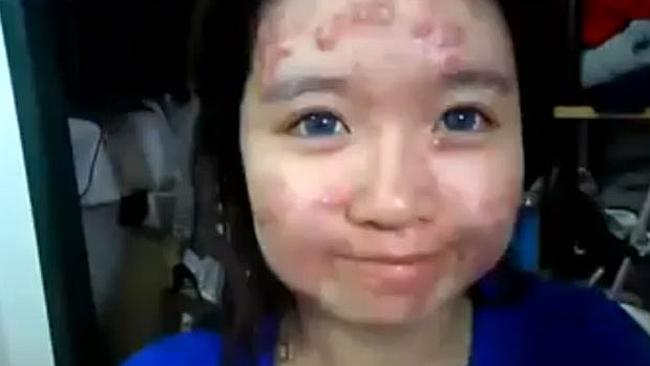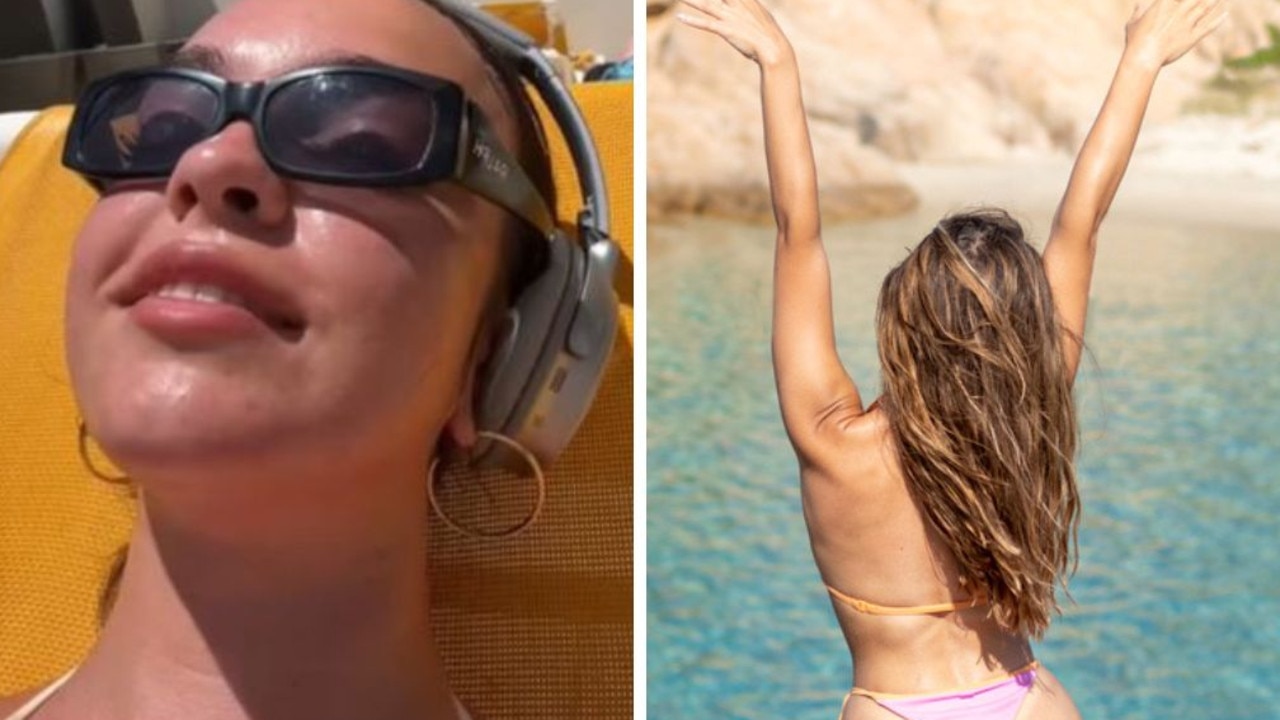Adult acne: It's not as rare as you'd think
THOUGHT your acne would disappear after high school? It won't. Adult acne affects 50pc of men and 35pc of women - but why do we never talk about it?

LAST week we brought you a story about Elaine Mokk, an acne-prone woman who released a YouTube video showing how to cover up your spots with make-up.
The video struck a chord with news.com.au readers, and was one of our most read stories of the day. Clearly, Elaine isn't alone in her desire to cover up imperfections - but she's also not alone in her battle with acne.
Research conducted in Australia by Clearskincare Clinics has found that an astonishing 35 per cent of adult women and 50 per cent of adult men suffer from acne - and we're not just talking a pimple or two. We're talking full blown, cystic acne - the kind you thought only existed in your teens, and were dismayed to find out carrys on - or starts - in your twenties and thirties.
The Journal of the American Academy of Dermatology found that one third of people with facial acne also have some amount of body acne and, much to the dismay of adult acne sufferers, a study on post-adolescent acne featured in the International Journal of Cosmetic Science stated that "there appears to be an increase in post-adolescent acne, and the disease is lasting longer and is requiring treatment well into the mid-forties".
"While acne has always been considered a teenage condition, more and more adults are experiencing it", agrees acne expert Dr Philippa McCaffery from Clearskincare Clinics.
"We still don't really understand why acne occurs in the first place, and its growing incidence in adults is also a mystery. But what we do know is that acne results from overactive sebaceous glands in the skin, over-producing sebum (oil) and over-producing skin cells, which together form plugs in the pores which create blackheads and milia. Sometimes the overactive sebaceous glands become inflamed and infected, and that's what causes pimples and cystic acne," she explains.
According to Dr McCaffery, common triggers for adult acne are stress, your period, Polycystic Ovarian Syndrome, taking yourself off the pill and taking steroids.
"Oil based makeup and moisturisers can also aggravate acne prone skin," Dr McCaffery says. "Some people find change of season can affect their breakouts, and some people do have diet induced acne - for example, dairy can be a culprit."
Whatever the reason acne is caused, it's affect on a person can be damaging. Just like Elaine, who admitted that "when I'm talking to someone and I see their eyes travelling on my face...I really want to cry...it makes me so insecure", Dr McCaffery has dealt with countless depressed, embarrassed and insecure clients.
"I've treated clients who hide in their rooms during the daytime with the curtains closed, and clients who cover up their acne with so much make-up it makes it worse," she says.
"I have treated clients who got acne in their late 20s, and clients who have battled acne their whole life, but every client asks the same question: 'Why do I have this? I'm not a teenager'.
"Acne carries an enormous stigma in our society. Adults with acne feel like they are disfigured and are reluctant to work in jobs where they have contact with the general public. Women with adult acne are able to cover it with make up, but tend to become increasingly reluctant to ever take their make up off. And, of course, long term acne has a far higher risk of causing scarring, which is yet another issue for acne sufferers to be embarrassed and worried about", she says.

Now we've all been told never to pop pimples and never to touch acne-prone skin, but can acne actually be treated? Absolutely, says Dr McCaffery, who developed a treatment called Sebaceous Gland Ablation (SGA), which targets the overactive sebaceous glands that cause acne and blackheads.
"SGA uses an ultra-fine heated probe to penetrate and deactivate overactive sebaceous glands that cause blackheads, pimples and inflamed acne cysts. The advantage of SGA is that once the sebaceous glands causing the breakouts have been eliminated, there are no more breakouts," says Dr McCaffery.
"One of the biggest shortcomings of traditional medical treatments for acne has been our lack of understanding of the fundamental cause of it. We know that the sebaceous glands are acting abnormally, but we don't know what the underlying cause is. Therefore most of the treatments to date have been bandaids, rather than cures," she says.
There are currently several studies being conducted into what causes acne and how you can treat it. Researchers at the University of South Australia are looking at using essential oils and aromatherapy to treat acne because of their proven effectiveness in treating "bacterial infection, inflammation, pain and nausea", lead researcher Tamara Agnew told All About Acne.
"In vitro studies have found essential oils to be effective against the bacteria involved in acne Propionibacterium acnes - but there is a lack of clinical evidence to support the claims that essential oils will help reduce physical symptoms of acne, which is why this study is so important," she said
But for now, at home, "a proper skincare routine is essential for beating acne", affirms Dr McCaffery.
"I recommend using glycolic acid cleansers and creams and a salicylic toner to help open blocked pores and to control breakouts. For people with moderate to severe acne I would prescribe Vitamin A Cream to help suppress the sebaceous glands and improve scarring," she says.
For more information and advice on acne and how to treat it, see a doctor or a dermatologist to have your condition assessed, or visit clearskincareclinics.com.au
And most importantly, remember that you are not alone in your skincare battle.
###



